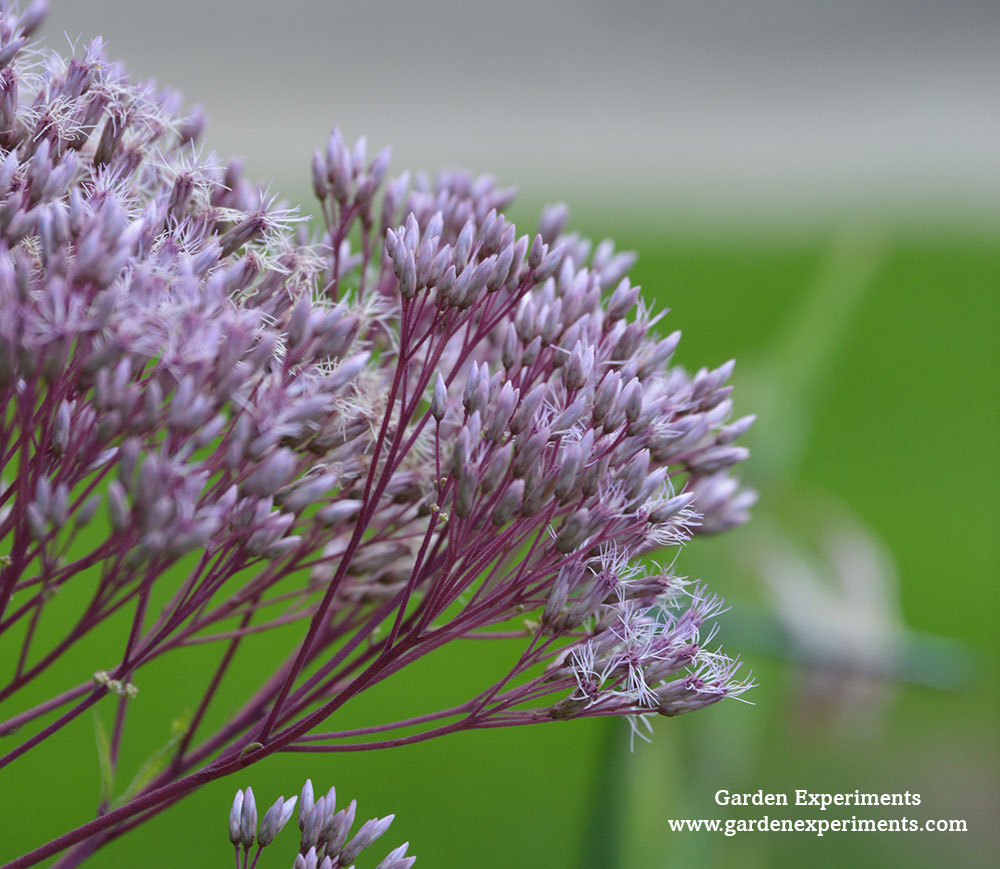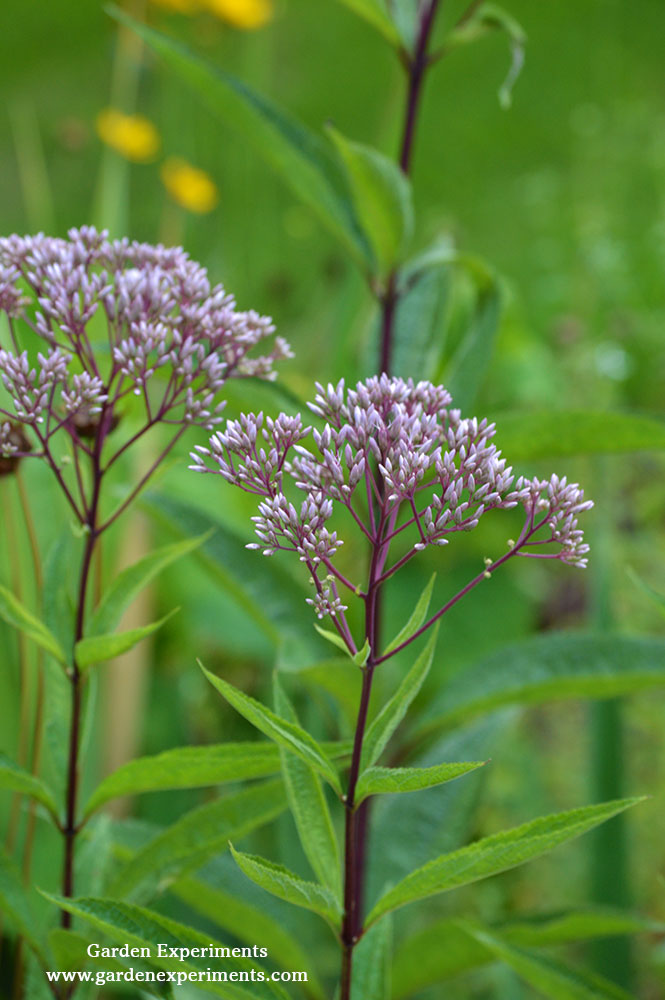Despite the name, you’ll find this ‘weed’ in more and more gardens. Joe Pye Weed is a good garden staple for attracting pollinators from bees to butterflies. I planted it last fall and this summer the blooms have been prolific and I have seen all sorts of bees, wasps, and flies feeding on the nectar.
Joe Pye weed flowers are gorgeous. The stem at the top of the plant is a lovely shade of pink, which transitions into multiple clusters of pink-purple tiny flowers. It’s a hardy plant, too, and can withstand the clay soil of Mississippi (and it’s deer resistant to boot!).
Being native to the area, you can plant Joe Pye Weed and pretty much forget it. It will pay you back with blooms from July to September. If you don’t want a plant that is quite so tall, you can get a miniature variant, which maxes out at around 4 feet tall. It’s much more manageable for smaller gardens.
I think you get much more of a visual impact if you plant a large grouping of these plants. The sea of pinkish blooms is quite stunning and the bees and butterflies will thank you!
Joe Pye Weed Description – Eutrochium spp.
Joe Pye Weed is perennial, dying back each winter. You will want to cut it back to the ground in late winter. Leave the seed heads through fall as they provide some garden interest.
Native to the eastern and northern United States, Joe Pye Weed can get as tall as 6 feet and as broad as 4 feet, so select where to plant it very carefully. It prefers full sun but will also do well in part shade. While it can tolerate some dry conditions, it prefers consistently moist soil, so don’t let the soil dry out. It is highly tolerant of wet and clay soil.
How to Propagate Joe Pye Weed
The easiest way to grow more Joe Pye weed is to propagate it from stem cuttings.
Cut a stem about 4-6 inches long and remove the leaves from the bottom 2-3 inches. Dip the stem in rooting hormone, place it in potting soil, and keep it moist. Keep the soil moist but not wet for a few weeks.
You can place a plastic bag or bottle over top of the cutting to help keep the moisture and warmth in, but keep an eye out for any mold.
You can also collect seeds from your plant in the fall and plant them the next spring. Try sprinkling the seeds on loose soil for best germination. The seeds don’t require much soil cover, just a sprinkling. Water and then don’t allow the soil to dry out (but don’t keep it too wet).
Wildlife Uses
Many bees, wasps, flies, and butterflies feed on the flowers of Joe Pye weed. In the fall, birds will feed on the seeds. It’s also a host plant for some caterpillars.
Check out all of these bees on the Joe Pye weed in my garden this summer.
A Little About Joe Pye and His Weed
When a plant has been stamped by the name of a man, you have to wonder who he was and what he did. Richard Pearce did a lot of research to discover the truth.
Richard found several early references in botanical publications to either a man who planted this weed in order to treat early settlers for typhus. He also found some references that indicate Joe Pye is a mispronunciation of a Native American word for typhus. His article is very detailed and for those interested in learning more, visit the Prairie Works website for the full article.



